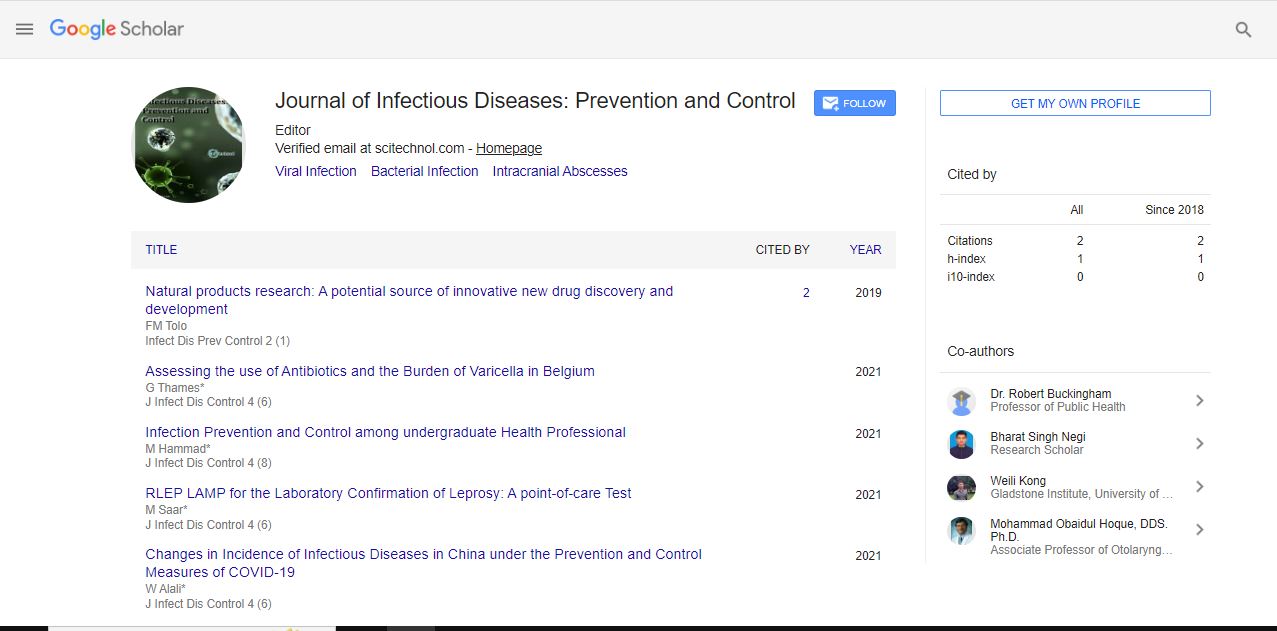Commentary, Infect Dis Prev Control Vol: 6 Issue: 4
Strategic Categorization of Infections to Enhance Immunotherapy
Leonel Ansstas*
1Department of Medicine, University of Pennsylvania, Pennsylvania, United States of America
*Corresponding Author: Leonel Ansstas,
Department of Medicine,
University of Pennsylvania, Pennsylvania, United States of America
E-mail: leonansst@upenn.edu
Received date: 24 November, 2023, Manuscript No. IDPC-24-127258;
Editor assigned date: 27 November, 2023, Pre QC No. IDPC-24-127258 (PQ);
Reviewed date: 11 December, 2023, QC No. IDPC-24-127258;
Revised date: 18 December, 2023, Manuscript No. IDPC-24-127258 (R);
Published date: 26 December, 2023, DOI: 10.36648/idpc.6.4.147
Citation: Ansstas L (2023) Strategic Categorization of Infections to Enhance Immunotherapy. Infect Dis Prev Control 6:4.
Description
In the sophisticated field of immunology, understanding the classification of infections plays a pivotal role in devising effective immune therapy strategies. Categorizing infections based on the nature and impact is vital for customizing precise interventions that can bolster the body's defense mechanisms. Categorizing infections is essential for several reasons. Above all, it allows healthcare professionals to differentiate between primary and secondary infections. Primary infections are the initial encounters with pathogens, while secondary infections are subsequent challenges posed by the same or different pathogens. This classification aids in identifying the stage of infection and determining appropriate therapeutic interventions. Furthermore, categorization helps in understanding the diverse mechanisms employed by pathogens to evade the immune system.
Different pathogens may trigger distinct immune responses and customizing therapies to target specific vulnerabilities becomes more feasible when these responses are clearly delineated. The development of immune therapy has revolutionized the landscape of medical interventions. Instead of merely treating symptoms, immune therapy seeks to enhance the body's natural defense mechanisms. Strategic categorization of infections becomes a cornerstone in the design and implementation of immune therapy protocols. In primary infections, the focus is often on strengthening and activating the inherent immune response. This initial line of defense includes physical barriers, such as the skin and non-specific cellular responses aimed at halting the spread of pathogens.
Understanding the characteristics of the primary infection allows for the customized enhancement of these mechanisms, promoting a swift and effective response. Secondary infections, on the other hand, may require a more complex approach. The immune system's memory, a key feature in secondary responses, enables the recognition and rapid elimination of previously encountered pathogens. Immune therapy in this context may involve boosting memory cell populations or modulating the immune system to prevent excessive inflammation. Different types of infections demand different therapeutic approaches. Viral infections, for instance, often necessitate antiviral medications that customize specific stages of the viral life cycle.
Bacterial infections, on the other hand, may require antibiotics with a spectrum of activity customized to the infecting bacteria. In the context of immune therapy, categorization allows for the development of customized interventions. Immunomodulatory drugs can be designed to enhance or suppress specific aspects of the immune response based on the nature of the infection. Precision in treatment minimizes side effects and improves overall therapeutic efficacy. While the importance of categorization is evident, challenges persist in accurately classifying infections. Pathogens can exhibit a high degree of variability and their interactions with the host may evolve over time. Additionally, some infections may elicit mixed immune responses, further complicating the categorization process.
Advancements in diagnostic technologies, including molecular biology and genomics, are helping to overcome these challenges. The ability to analyze the genetic composition of pathogens in real-time allows for a more precise identification and categorization of infections. Integration of these technologies into routine clinical practice enhances the ability to handle the immune therapy strategies with unprecedented accuracy. In the pursuit of effective immune therapy, the strategic categorization of infections emerges as a fundamental step. It enables healthcare professionals to decipher the complexities of the immune response, design customized interventions and optimize treatment outcomes. As the understanding of immunology continues to deepen and diagnostic tools advance, the future has potential for even more refined and personalized approaches to managing infections and bolstering immunity.
 Spanish
Spanish  Chinese
Chinese  Russian
Russian  German
German  French
French  Japanese
Japanese  Portuguese
Portuguese  Hindi
Hindi 